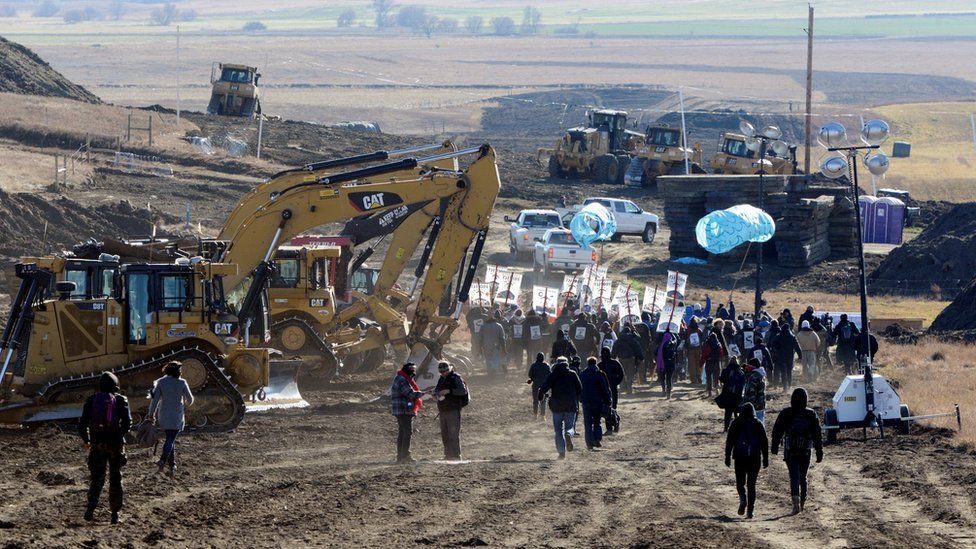Dakota pipeline: US Army to allow work on final section
- Published

The US Army has been ordered to allow the construction of the final section of a controversial oil pipeline.
North Dakota Senator John Hoeven said the Army Corps of Engineers had been directed to allow work under Lake Oahe, a reservoir on the Missouri River.
Native Americans, who have protested against the Dakota Access Pipeline for months, vowed legal action to stop it.
President Donald Trump recently signed an executive order signalling his support for the pipeline.
But the president has insisted the order was contingent upon pipeline makers using US-made materials and equipment.
The US Army Corps of Engineers, which has approval authority, decided last year to explore other routes for the pipeline amid huge protests by the Standing Rock Sioux Tribe.
In an announcement on Tuesday, Mr Hoeven said that the acting Secretary of the Army, Robert Speer, had ordered the corps to allow the work necessary to complete the pipeline.
The US Army said on Wednesday it had taken the first steps to "expeditiously review requests for approvals" to build and operate the pipeline, but that does not mean the project is set to move forward.
"The Assistant Secretary for the Army Civil Works will make a decision on the pipeline once a full review and analysis is completed in accordance with the directive," the Army said in a statement.
The Standing Rock Sioux Tribe had earlier said that the Army has to wait for the results of a scheduled environmental impact study (EIS) that was ordered in January.
"The Army Corps lacks statutory authority to simply stop the EIS," they said in a statement.
The $3.7bn (£2.8bn) pipeline is designed to transport about 470,000 barrels of crude oil a day across four states, from North Dakota to a terminal in Illinois, where it can be shipped to refineries.
The Sioux say the final section would contaminate drinking water and damage sacred burial sites. They and their supporters have set up a Sacred Stone spiritual camp near the Missouri river.
Just four days after taking office, President Trump signed an executive order in favour of the pipeline. He told the Army to quickly reconsider its decision to explore other routes.
- Published2 November 2016
- Published2 November 2016
- Published17 October 2016